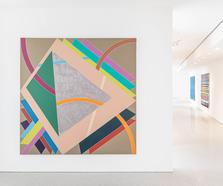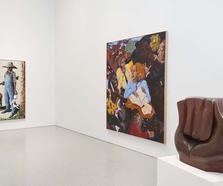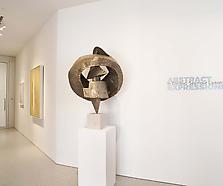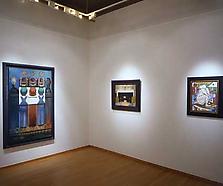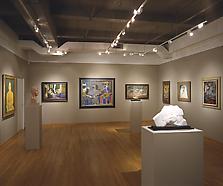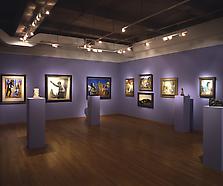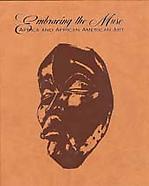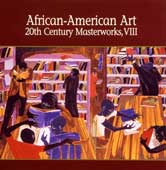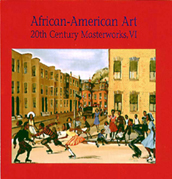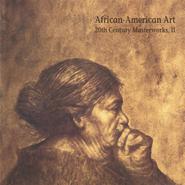1935
Negro Art, YWCA, 144 West 138th Street, New York, NY
1937
An Exhibition of the Harlem Artist Guild, presented by Phi Beta Sigma Fraternity, New York Public Library, 201 West 115th Street, New York, NY
1940
Exhibition of the Art of the American Negro (1851-1940), Tanner Art Galleries, Chicago, IL; traveled to Library of Congress, Washington, DC
1950
American Painting Today,1950, The Metropolitan Museum of Art, New York, NY
1964
Artists for CORE: Third Annual Art Exhibition and Sale, Gallery of American Federation of Arts, American Federation of Arts, New York, NY
1965
Sixth Annual Arts Festival, Temple Emanu-El, Yonkers, NY
1968
Gallery of Modern Art, New York, NY
Invisible Americans: Black Artists of the 30’s, The Studio Museum in Harlem, New York, NY
1972
Atlanta University Center, GA
1975
Art Students League, New York, NY
1978
New York/Chicago: WPA and the Black Artist, Studio Museum in Harlem, New York, NY
1994
African-American Art: 20th Century Masterworks, Michael Rosenfeld Gallery, New York, NY
The Harmon and Harriet Kelley Collection of African American Art, San Antonio Museum of Art, San Antonio, TX; El Paso Museum of Art, El Paso, TX; Michael C. Carlos Museum, Emory University, Atlanta, GA; Butler Institute of American Art, Youngstown, OH; Hunter Museum of Art, Chattanooga, TN
1995
African-American Art: 20th Century Masterworks, II, Michael Rosenfeld Gallery, New York, NY; Long Beach Museum of Art, Long Beach, CA
1996
African-American Art: 20th Century Masterworks, III, Michael Rosenfeld Gallery, New York, NY
1997
Revisiting American Art: Works from the Collections of Historically Black Colleges and Universities, Katonah Museum of Art, Katonah, NY
African-American Art: 20th Century Masterworks, IV, Michael Rosenfeld Gallery, New York, NY; Fisk University Galleries, Nashville, TN
1998
African-American Art: 20th Century Masterworks, V, Michael Rosenfeld Gallery, New York, NY; The Newcomb Art Gallery, Tulane University, New Orleans, LA
1999
African-American Art: 20th Century Masterworks, VI, Michael Rosenfeld Gallery, New York, NY; Flint Institute of Arts, Flint, MI
2000
African-American Art: 20th Century Masterworks, VII, Michael Rosenfeld Gallery, New York, NY; Appleton Museum of Art, Ocala, FL
A Brush with the Past, G.R. N’Namdi Gallery, Birmingham, MI
2001
African-American Art: 20th Century Masterworks, VIII, Michael Rosenfeld Gallery, New York, NY; Texas Southern University Museum, Houston, TX
2002
African-American Art: 20th Century Masterworks, IX, Michael Rosenfeld Gallery, New York, NY
2003
African-American Art: 20th Century Masterworks, X, Michael Rosenfeld Gallery, New York, NY
Challenge of the Modern: African-American Artists 1925-1945, The Studio Museum in Harlem, New York, NY
An American Legacy: Art from the Studio Museum in Harlem, Parrish Art Museum, Southampton, NY
2004
Embracing the Muse: Africa and African American Art, Michael Rosenfeld Gallery, New York, NY
2005
Syncopated Rhythms: 20th Century African American Art from the George and Joyce Wein Collection, Boston University Art Gallery, Boston, MA
2006
Building Community: The African American Scene, Michael Rosenfeld Gallery, LLC, New York, NY, January 13-March 11, 2006
2007
Decoding Myth: African American Abstraction, 1945-1975, Michael Rosenfeld Gallery, LLC, New York, NY
For the People: American Mural Drawings of the 1930s and 1940s, Frances Lehman Loeb Art Center, Vassar College, Poughkeepsie, NY
2008
African American Art: 200 Years, Michael Rosenfeld Gallery, LLC, New York, NY
2009
Harlem Renaissance, Oklahoma City Museum of Art, Oklahoma City, OK
A Force for Change: African American Art and the Julius Rosenwald Fund, The Spertus Museum, Chicago, IL; Allentown Art Museum, Allentown, PA; Montclair Art Museum, Montclair, NJ
Abstract Expressionism: Further Evidence (Part One: Painting), Michael Rosenfeld Gallery, LLC, New York, NY
Nexus New York: Latin/American Artists in the Modern Metropolis, El Museo del Barrio, New York, NY
Highlights from John and Vivien Hewitt Collection of African American Art, Harvey B. Gantt Center for African-American Arts & Culture, Charlotte, NC
2010
Translating Revolution: U.S. Artists Interpret Mexican Muralism, National Museum of Mexican Art, Chicago, IL
2011
Abstract Expressionism: Reloading the Canon, Michael Rosenfeld Gallery, LLC, New York, NY
2013
Abstract Expressionism / In Context: Seymour Lipton, Michael Rosenfeld Gallery LLC, New York, NY
2014
Witness: Art and Civil Rights in The Sixties, Brooklyn Museum of Art, Brooklyn, NY,; Hood Museum of Art, Hanover, NH; The Blanton Museum of Art, Austin, TX
Beyond the Spectrum: Abstraction in African American Art, 1950-1975, Michael Rosenfeld Gallery LLC, New York, NY
RISING UP/UPRISING: Twentieth Century African American Art, Michael Rosenfeld Gallery LLC, New York, NY
2015
Collectors Legacy: Selections from the Sandra Lloyd Baccus Collection, The David C. Driskell Center at the University of Maryland, College Park, MD
2017
Constructing Identity: Petrucci Family Foundation Collection of African-American Art, Portland Art Museum, Portland, OR
Art of Rebellion: Black Art of the Civil Rights Movement, Detroit Institute of Arts, Detroit, MI
Jacob Lawrence: Lines of Influence, SCAD Museum of Art, Savannah College of Art and Design, Savannah, GA
2018
I Too Sing America: The Harlem Renaissance at 100, Columbus Museum of Art, Columbus, OH
Something to Say: The McNay Presents 100 Years of African American Art, McNay Art Museum, San Antonio, TX
The Masters: Art Students League Teachers and their Students, Hirschl & Adler, New York, NY
Augusta Savage: Renaissance Woman, Cummer Museum of Art & Gardens, Jacksonville, FL; New-York Historical Society Museum & Library, New York, NY; Palmer Museum of Art, Pennsylvania State University, University Park, PA; Dixon Gallery & Gardens, Memphis, TN
Posing Modernity: The Black Model from Manet and Matisse to Today, The Miriam and Ira D. Wallach Art Gallery, Lenfest Center for the Arts, Columbia University, New York, NY
2019
Black Refractions: Highlights from The Studio Museum in Harlem, Museum of the African Diaspora, San Francisco, CA; Gibbes Museum of Art, Charleston, SC; Kalamazoo Institute of Arts, Kalamazoo, MI; Smith College Museum of Art, Smith College, Northampton, MA; Utah Museum of Fine Arts, University of Utah, Salt Lake City, UT; Frye Art Museum, Seattle, WA
Harlem: In Situ, Addison Gallery of American Art, Phillips Academy, Andover, MA
A LABOR OF LOVE: The Art Collection of Dr. Constance E. Clayton, Art & Artifacts Division, Schomburg Center for Research in Black Culture, New York Public Library, New York, NY
Afrocosmologies: American Reflections, Wadsworth Atheneum Museum of Art, Hartford, CT
Globalism Pops BACK Into View: The Rise of Abstract Expressionism, Michael Rosenfeld Gallery LLC, New York, NY
2020
Vida Americana: Mexican Muralists Remake American Art, 1925-1945, Whitney Museum of American Art, New York, NY; McNay Art Museum, San Antonio, TX
Uptown 2020, The Miriam and Ira D. Wallach Art Gallery, Lenfest Center for the Arts, Columbia University, New York, NY
Riffs and Relations: African American Artists and the European Modernist Tradition, curated by Adrienne L. Childs, The Phillips Collection, Washington, DC
Paper Power, Michael Rosenfeld Gallery LLC, New York, NY
2021
Distinctive/Instinctive: Postwar Abstract Painting, Michael Rosenfeld Gallery LLC, New York, NY
Creating Community: Cinque Gallery Artists, The Art Students League, New York, NY
The Kinsey African American Art & History Collection, Greenwood Cultural Center and ONEOK Boathouse, Gathering Place, Tulsa, OK; Tacoma Art Museum, Tacoma, WA; The Frederick R. Weisman Museum of Art, Pepperdine University, Malibu, CA
Black American Portraits, Los Angeles County Museum of Art, Los Angeles, CA
2023
Crosscurrents: Intercultural Conversations in Art, Mott-Warsh Collection, Flint, MI







